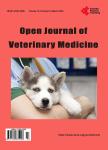Effect of the Technological Status of Small Cow-Calf Farm Producers on the Induction to Resumption of Ovarian Activity of Dual-Purpose Cattle Raised under Topical Conditions
Effect of the Technological Status of Small Cow-Calf Farm Producers on the Induction to Resumption of Ovarian Activity of Dual-Purpose Cattle Raised under Topical Conditions作者机构:Departamento de Reproducción Facultad de Medicina Veterinaria y Zootecnia UNAM CDMX México Centro de Enseñ anza Investigación y Extensión en Ganadería Tropical Facultad de Medicina Veterinaria y Zootecnia Universidad Nacional Autónoma de México Martínez de la Torre Veracruz México Facultad de Medicina Veterinaria y Zootecnia Universidad Veracruzana Veracruz México Department of Animal Sciences Washington State University Pullman Washington DC USA
出 版 物:《Open Journal of Veterinary Medicine》 (兽医学(英文))
年 卷 期:2020年第10卷第11期
页 面:195-205页
主 题:Cattle Ovulation Technological Level Small Cow-Calf Farm Producers
摘 要:The aim of the present study was to evaluate the impact of the technological level in small-scale dual-purpose cow-calf Bos indicus female operations on the resumption of the ovarian activity post-partum. A total of 13 small scale dual-purpose Bos indicus × Bos taurus operations were included in this experiment and they were classified according to their technological status as: high technological status (HT), medium technological status (MT) and low technological status (LT). Ninety-three mature cows were treated with either a CIDR (controlled internal drug release device) with estradiol benzoate (CIDR+EB) or alone (CIDR). At day 9 all animals received intravaginally a CIDR for nine days. At day 0, the CIDR was withdrawn and 24 hours later one dose of estradiol benzoate was administered to 51 cows (17 in HT, 17 in MT and 17 in LT), the remaining animals (n = 42) did not receive the estradiol benzoate administration (14 in HT, 13 in MT and 15 in LT). Comparisons were performed on serum progesterone concentrations after CIDR treatment. By day 7 after implant withdrawal, the proportion of cows that resume ovarian activity detected by progesterone concentration increased in all technological level farms, no statistical main effect was observed within technological level. By day 17 there was a significant main effect of technological level (P = 0.05) on the proportion of animal that resumed the estrous cycles, but neither a main effect of treatment (P = 0.97) nor an interaction between technological level and treatment (P = 0.98). Furthermore, technological level of the farm showed a tendency (P = 0.07) to affect that resume the estrous activity, and a significant effect of treatment was observed (P = 0.005) but no interaction between technological level and treatment. The proportion of cows that showed estrus was different across technological level (P = 0.02), the highest proportion of cows showing estrus regardless of treatment was in the HT: 90% (40% CIDR and 50% CIDR+EB), MT: 50% (13.3% CIDR and 36.7% CIDR+EB) and in the LT: 50% (18.8% CIDR and 31.3% CIDR+EB). In conclusion, the combination of a progestogen and estradiol benzoate resulted in a high proportion of cows that were induced to resume the ovarian activity and this treatment was particularly beneficial in the medium and low technological status of the farms.



